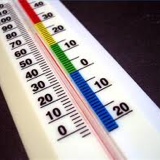Add Park name Here
-
Site conducted
-
Conducted on
-
Prepared by
-
Location
Office Safety
-
Aisles, hallways, lobbies, workshops and vehicle bays are free of clutter and debris.
-
Handrails on stairs, lofts and ramps are present, secure and built to code.
-
Walking and working surfaces are free of trip hazards, holes and uneven changes in grade.
-
Coffee pots and other small appliances are unplugged when not in use.
-
Office furniture is in good shape without loose or missing pieces.
-
Sharp edges are protected. (Scissors, razors, cutting boards, pins, staples)
-
Wall hangings, book shelves, decorations, and tall furniture are secured to walls.
-
Desk and file drawers are closed when not in use.
-
Lighting is adequate throughout buildings.
-
Illuminated exit signs are operable in back up power mode.
-
Emergency lighting (where required) is operable in back up power mode.
-
Employees are familiar with approved exits.
Electrical Safety
-
Electric cords are in good shape and not frayed or taped.
-
Outlets within 6 feet of a water source have GFCI protection.
-
Extension cords are UL approved and labeled.
-
Circuit breaker boxes do not expose live power source.
-
Extension cords and surge protectors are not stapled or nailed to walls or floors.
-
Electrical equipment is properly grounded.
-
Surge protectors are not plugged into each other.
-
Storage within transformer vaults is prohibited.
-
All outlets and switches have face plates.
-
Written lock out/tag out procedures are followed.
Storage Areas<br>Stairways and Ladders <br>
-
Storage areas are clean and orderly.
-
Excessive fuel loads such as files and paper are stored in metal filing cabinets.
-
Wooden ladders are not being used.
-
Load capacities are posted in lofts and overhead storage areas.
-
Treads and risers are in good shape.
-
Floor openings are protected by toe boards and railings.
-
Oxidizing chemicals are stored separately from organic materials.
-
Trash bins are provided and emptied regularly.
-
Covered metal waste cans are used to dispose of oil and paint soaked rags.
-
Adequate ventilation is provided in sanding, grinding, buffing and spray painting operations.
-
Flammable liquids are stored in safety cans or flammable liquids cabinets.
Fire Protection
-
Portable fire extinguishers are visibly inspected by site staff monthly and indicated on the monthly inspection tag attached to the fire extinguisher.
-
The pressure gauge indicator is in the green (Charged) zone.
-
The discharge locking pin is in place and free of rust or debris.
-
The nozzle is free of obstructions.
-
The discharge hose is not cracked or damaged.
-
Portable fire extinguishers are maintained and serviced annually.
-
Portable fire extinguishers are clearly marked by a qualified company and noted on the service tag attached to the fire extinguisher.
-
Fire alarm systems and sprinkler systems are inspected annually by a licensed fire protection company as indicated on the service tag.
-
Portable fire extinguishers are mounted and readily accessible.
-
Employees have been trained in the use of portable fire extinguishers.
First Aid AED/CPR Training
-
First aid supplies are adequate for potential injuries in the workplace.
-
Eyewash facilities are provided where employees are exposed to corrosive materials.
-
Eyewash facilities are tested monthly.
-
Personal Protective Equipment
-
Hard hats are provided and worn where danger of falling objects or low-lying hazards exist.
-
Hearing protection is provided and worn in accordance with chapter 22 of the safety manual.
-
Safety eyewear is provided and worn where there is a danger of flying debris, splashing of corrosive, or other hazardous materials.
-
Gloves, aprons, shields, and chaps are provided and worn for protection from sharp, hot, or corrosive materials.
-
All personal protective equipment is maintained in good, clean condition and readily accessible.
-
Respirators
-
Respirators are used in accordance with chapter 23 of the safety manual.
AEDs
-
Batteries and pads are visibly inspected by staff monthly and are not expired
-
AEDs are mounted and readily accessible with locations clearly marked.
-
Employees are trained in CPR and the use of AEDs.
Machinery and Equipment
-
Machines exposing employees to rotating parts, pinch points and flying debris are properly guarded.
-
Hand tools are in good condition.
-
Grinding wheel tool rests are within 1/8 inch or less.
-
Mechanical power transmission belts are properly guarded from the wheel.
-
Machinery designed to be anchored shall be
-
Power tools are in good working condition.
-
Switches, cords, and guards are present and in good condition.
-
Compressed gas cylinders are free of defects, deep rusting or leakage.
-
Compressed gas cylinders are secured properly while being stored.
-
Compressed gas cylinders are not stored on carts when not being used.
-
Compressed gas cylinder valves are capped when not in use within 24 hours.
-
Cranes and hoists are inspected monthly.
-
Hooks are equipped with safety latches.
-
Weight limits are clearly posted.
-
(Forklift) are only operated by qualified personnel.
-
Inspections are conducted in accordance with chapter 11 of the safety manual.
Welding, Cutting and Brazing
-
Welding, Cutting and Brazing must only be performed by employees who are properly instructed and qualified
-
Fire Protection and Prevention For fire protection and prevention responsibilities of welders and cutters, their supervisors (including outside contractors) and those in management on whose property cutting and welding is to be performed, see, NFPA 51B-Standard for Fire Prevention in Use of Cutting and Welding Processes.
-
Welding, Cutting and Brazing Checklist for General Industry and Construction TPWD employees conducting welding, cutting and/or brazing operations should use the checklist located at: http://www.tdi.texas.gov/pubs/videoresource
Safety Program Documentation
-
Emergency Plans are maintained in accordance with TPWD safety manual.
-
Safety manual acknowledgment forms are signed by every employee.
-
Monthly Safety Inspections Sheets are current
-
Safety Posters are displayed for employees to read on a regular basis.
-
Equipment Proficiency reports are current.
-
Safety decals are placed on all marked TPWD vehicles.
-
Job hazard analyses are current and readily accessible for all employees.
-
SOPs for hazardous activities are current and readily accessible for all employees.
-
Annual HAZCOM training rosters are current.
Motor Vehicle Operations
-
Windshields, windows, and mirrors are free of cracks or other defects.
-
Passenger compartments are free of clutter and potential projectiles.
-
Vehicle Inspection tags are current.
-
Vehicles contain a first aid kit.
-
Vehicles are free of major body damage.
-
Vehicles contain a fire extinguisher (minimum 5 lb. ABC).
-
Bumpers, brush guards and push-bars are free of defect and are properly secured.
-
Tires are inflated to proper PSI.
-
Existing disrepairs are documented by incident report.
-
Seat belts are free of cuts, frays and other defects.














